Related Research Articles

Elaine Brown is an American prison activist, writer, singer, and former Black Panther Party chairwoman who is based in Oakland, California. Brown briefly ran for the Green Party presidential nomination in 2008.
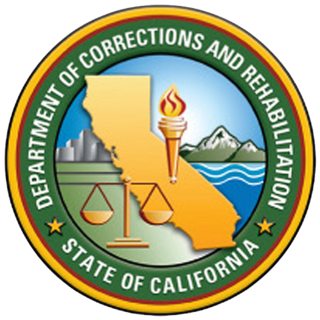
Pelican Bay State Prison (PBSP) is a supermax prison in Crescent City, California. The 275-acre (111 ha) prison takes its name from a shallow bay on the Pacific coast, about 2 mi (3.2 km) to the west.
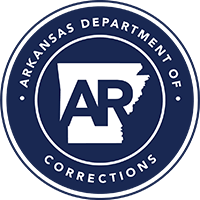
The Arkansas Department of Corrections (DOC), formerly the Arkansas Department of Correction, is the state law enforcement agency that oversees inmates and operates state prisons within the U.S. state of Arkansas. DOC consists of two divisions, the Arkansas Division of Corrections (ADC) and the Arkansas Division of Community Corrections (DCC), as well as the Arkansas Correctional School District. ADC is responsible for housing and rehabilitating people convicted of crimes by the courts of Arkansas. ADC maintains 20 prison facilities for inmates in 12 counties. DCC is responsible for adult parole and probation and offender reentry.

California State Prison, Corcoran (COR) is a male-only state prison located in the city of Corcoran, in Kings County, California. It is also known as Corcoran State Prison, CSP-C, CSP-COR, CSP-Corcoran, and Corcoran I. The facility is just north of the newer California Substance Abuse Treatment Facility and State Prison, Corcoran.
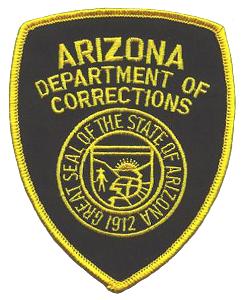
The Arizona Department of Corrections, Rehabilitation & Reentry (ADCRR), commonly and formerly referred to as simply the Arizona Department of Corrections, is the statutory law enforcement agency responsible for the incarceration of inmates in 13 prisons in the U.S. state of Arizona. As of December 2015, the ADC manages over 42,643 imprisoned inmates and over 5,466 inmates who have been paroled or that are statutorily released. ADC is also in involved in recruitment and training of Correctional Officers at the Correctional Officer Training Academy (COTA) in Tucson, Arizona. The ADC is headquartered in Downtown Phoenix.

Incarceration in the United States is one of the primary means of punishment for crime in the United States. In 2021, over five million people were under supervision by the criminal justice system, with nearly two million people incarcerated in state or federal prisons and local jails. The United States has the largest known prison population in the world. It has 5% of the world’s population while having 20% of the world’s incarcerated persons. China, with more than four times more inhabitants, has fewer persons in prison. Prison populations grew dramatically beginning in the 1970s, but began a decline around 2009, dropping 25% by year-end 2021.
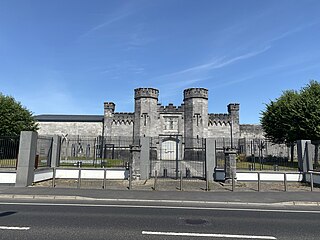
Portlaoise Prison is a maximum security prison in Portlaoise, County Laois, Ireland. Until 1929 it was called the Maryborough Gaol. It should not be confused with the Midlands Prison, which is a newer, medium security prison directly beside it; or with Dunamaise Arts Centre, which was the original Maryborough Gaol built c. 1789.

William C. Holman Correctional Facility is an Alabama Department of Corrections prison located in Atmore, Alabama. The facility is along Alabama State Highway 21.

Oregon State Penitentiary (OSP), also known as Oregon State Prison, is a maximum security prison in the northwest United States in Salem, Oregon. Originally opened in Portland 174 years ago in 1851, it relocated to Salem fifteen years later. The 2,242-capacity prison is the oldest in the state; the all-male facility is operated by the Oregon Department of Corrections (ODOC). OSP contains an intensive management wing, which is being transformed into a psychiatric facility for mentally ill prisoners throughout Oregon.
The Pendleton Correctional Facility, formerly known as the Indiana Reformatory, is a state prison located in Fall Creek Township, Madison County, near Pendleton and about 25 miles (40 km) northeast of Indianapolis. Established in 1923, it was built to replace the Indiana State Reformatory located in Jeffersonville after a fire severely damaged the original property. The Pendleton facility currently offers maximum and minimum-security housing for adult males over 22 years old. The maximum-security portion is made up of 31 acres (130,000 m2) surrounded by a concrete wall. It has an average daily population of approximately 1,650 inmates. Located on the grounds outside the enclosure, the minimum-security dormitory holds approximately 200 prisoners on a daily basis.
A prison strike is an inmate strike or work stoppage that occurs inside a prison, generally to protest poor conditions or low wages for penal labor. Prison strikes may also include hunger strikes.
In the United States, life imprisonment is the most severe punishment provided by law in states with no valid capital punishment statute, and second-most in those with a valid statute. According to a 2013 study, one of every 2,000 prison inhabitants of the U.S. were imprisoned for life as of 2012.

Opened in 1969, Georgia Diagnostic and Classification Prison (GDCP) is a Georgia Department of Corrections prison for men in unincorporated Butts County, Georgia, near Jackson. The prison holds the state execution chamber. The execution equipment was moved to the prison in June 1980, with the first execution in the facility occurring on December 15, 1983. The prison houses the male death row, while female death row inmates reside in Arrendale State Prison.
Red Onion State Prison (ROSP) is a supermax state prison located in unincorporated Wise County, Virginia, near Pound. Operated by the Virginia Department of Corrections (VADOC), it houses about 800 inmates. The prison opened in August 1998.
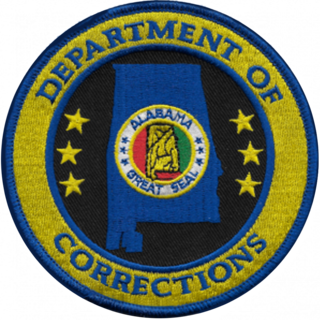
The Alabama Department of Corrections (ADOC) is the agency responsible for incarceration of convicted felons in the state of Alabama in the United States. It is headquartered in the Alabama Criminal Justice Center in Montgomery.
In most jurisdictions, prison inmates are forbidden from possessing mobile phones due to their ability to communicate with the outside world and other security issues. Mobile phones are one of the most smuggled items into prisons. They provide inmates the ability to make and receive unauthorized phone calls, send email and text messages, use social media, and follow news pertaining to their case, among other forbidden uses.
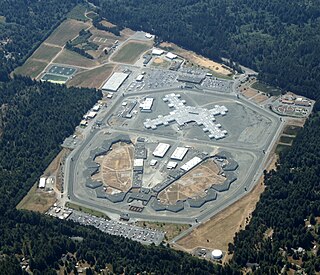
The 2013 California prisoner hunger strike started on July 8, 2013, involving over 29,000 inmates in protest of the state's use of solitary confinement practices and ended on September 5, 2013. The hunger strike was organized by inmates in long term solitary in the Security Housing Unit (SHU) at Pelican Bay State Prison in protest of inmates housed there that were in solitary confinement indefinitely for having supposed gang ties. Another hunger strike that added to the movement started the week before in High Desert State Prison. The focus of the High Desert State Prison hunger strike was to demand cleaner facilities, better food and better access to the library.

Penal labor in the United States is the practice of using incarcerated individuals to perform various types of work, either for government-run or private industries. Inmates typically engage in tasks such as manufacturing goods, providing services, or working in maintenance roles within prisons. Prison labor is legal under the 13th Amendment to the U.S. Constitution, which prohibits slavery and involuntary servitude, except as punishment for a crime.
Hancock State Prison is a Georgia Department of Corrections state prison for men located in Hancock County, Georgia. The facility opened in 1991 and currently has a capacity of 1191 prisoners.
The 2018 U.S. prison strike was a series of work stoppages and hunger strikes in prisons across the United States from August 21 to September 9, 2018. It was one of the largest prison strikes in US history. Striking workers demanded improved living conditions, an end to forced prison labor, and other prison reforms. The strike was conducted at least partly in response to the April 2018 prison riot at Lee Correctional Institution, which killed seven inmates and was the deadliest US prison riot of the past 25 years.
References
- 1 2 3 Wheaton, Sarah (December 12, 2010). "Inmates in Georgia Prisons Use Contraband Phones to Coordinate Protest". The New York Times . ISSN 0362-4331. Archived from the original on November 9, 2020. Retrieved December 25, 2020.
- 1 2 3 4 Wheaton, Sarah (December 12, 2020). "Prisoners Strike in Georgia". The New York Times . ISSN 0362-4331. Archived from the original on November 9, 2020. Retrieved December 25, 2020.
- 1 2 3 4 Spencer, Naomi (December 13, 2010). "US: Georgia prison inmates strike". World Socialist Web Site . International Committee of the Fourth International. Archived from the original on June 28, 2019. Retrieved December 25, 2020.
- 1 2 3 "More on GA prison strike (said to be the biggest in U$ history)". San Francisco Bay Area Independent Media Center . December 13, 2010. Archived from the original on September 28, 2017. Retrieved December 25, 2020.
- 1 2 Dixon, Bruce A. (December 13, 2010). "Prisoners on strike in Georgia". Socialist Worker . International Socialist Organization. Archived from the original on November 9, 2020. Retrieved December 25, 2020.
- ↑ Chen, Michelle (December 17, 2010). "Georgia Prison Strike: A Hidden Labor Force Resists". In These Times . Archived from the original on January 25, 2021. Retrieved December 26, 2020.
- 1 2 Hing, Julianne (December 15, 2010). "Georgia Prisoners End Protest, But Continue Demands". ColorLines . Applied Research Center. Archived from the original on September 19, 2020. Retrieved December 25, 2020.
- ↑ Cook, Rhonda (December 15, 2010). "Prisoners' protest over. For now". The Atlanta Journal-Constitution . Cox Enterprises. Archived from the original on December 18, 2010. Retrieved December 25, 2020.
- ↑ Kaleem, Jaweed (October 28, 2016). "'This is slavery': U.S. inmates strike in what activists call one of the biggest prison protests in modern history". Los Angeles Times . Archived from the original on December 24, 2020. Retrieved December 25, 2020.
- ↑ Lopez, German (August 17, 2018). "America's prisoners are going on strike in at least 17 states". Vox . Vox Media. Archived from the original on December 17, 2020. Retrieved December 25, 2020.